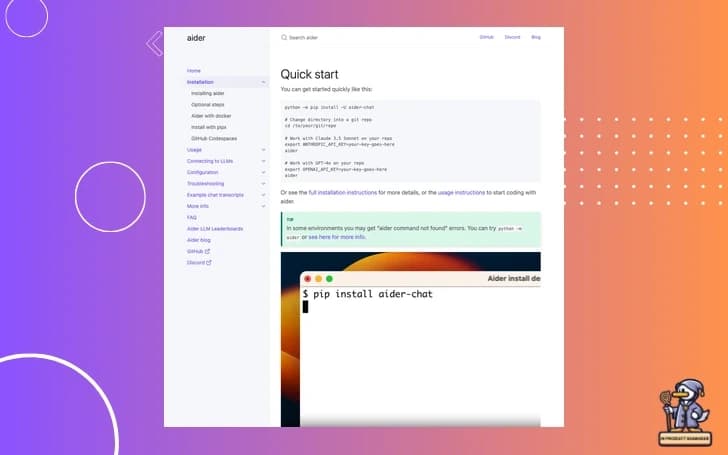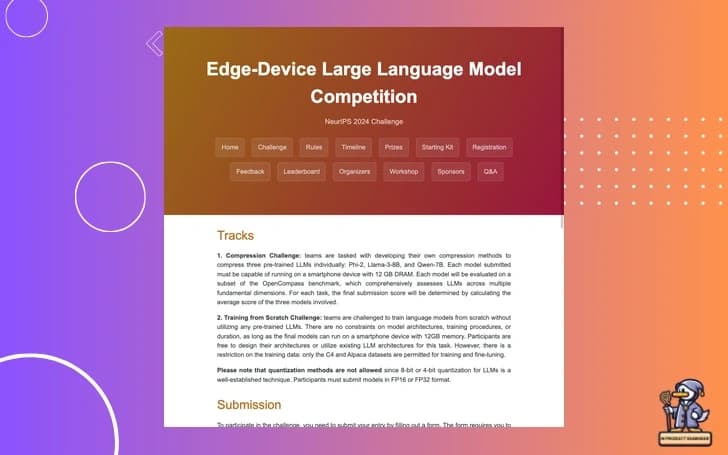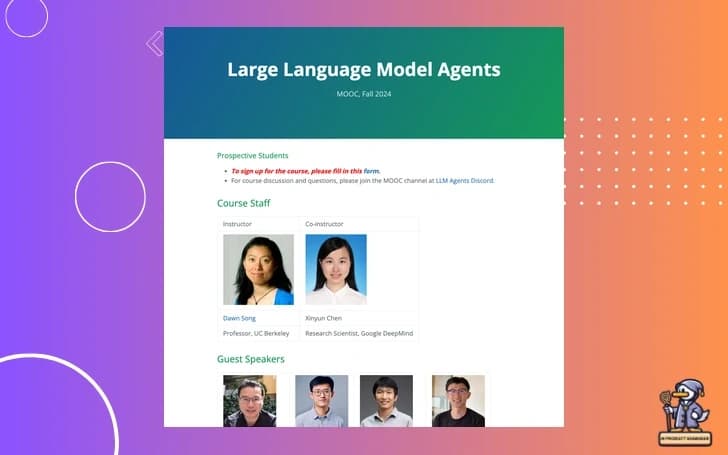🦙 Welcome to QuackChat: The DuckTypers' Daily AI Update!
Hello, fellow Ducktypers! It's Jens here, ready to dive into the fascinating world of AI developments. Today, we're exploring some game-changing breakthroughs that are reshaping the AI landscape. So, grab your favorite rubber duck, and let's debug these exciting updates together!
🔮 Llama 3.2 Vision: Multimodal AI for the Masses

Let's kick things off with a bombshell announcement that's got the AI community buzzing. TogetherCompute has partnered with Meta to offer Llama 3.2 11B Vision for free! This is a big deal, Ducktypers. We're talking about open-source multimodal AI that's now accessible to developers worldwide.
Here's what you need to know:
- It's available at this playground
- Unlimited access for experimentation
- Paid Turbo endpoints available for better performance
Now, let's break this down a bit. Multimodal AI can understand and process various types of data - text, images, audio, you name it. This opens up a world of possibilities for developers. Imagine creating an app that can not only understand text commands but also "see" and interpret images. The potential applications are mind-boggling!
Here's a simple pseudocode example of how we might use this in practice:
def analyze_image_and_text(image, text_prompt):
# Load the image
img = load_image(image)
# Create a prompt combining the image and text
prompt = f"Analyze this image: {img}
User query: {text_prompt}"
# Send to Llama 3.2 Vision model
response = llama_vision.generate(prompt)
return response
# Example usage
result = analyze_image_and_text("cat_photo.jpg", "What breed is this cat?")
print(result)This is just scratching the surface, Ducktypers. The possibilities are endless!
Call to Comment: How would you use Llama 3.2 Vision in your projects? Share your ideas, and let's brainstorm together!
🧠 OpenAI's Talent Tussle: The Great Brain Drain?

Now, let's switch gears and talk about some drama in the AI world. OpenAI, one of the leading players in the field, is facing some internal challenges. According to an article from The Information, there's a bit of a talent tug-of-war going on.
Here's the scoop:
- Employees have cashed out over $1.2 billion from selling profit units
- Researchers are threatening to quit over compensation concerns
- New CFO Sarah Friar is grappling with these demands
This situation raises some interesting questions about the sustainability of AI companies and the value of top talent in this field. It's a classic case of supply and demand, Ducktypers. With AI skills in high demand and a limited supply of top-tier talent, we're seeing some fascinating market dynamics play out.
Let's consider this from an engineering perspective. In software development, we often talk about "bus factor" - the number of team members who, if run over by a bus, would put the project in jeopardy. Now, imagine if your "bus factor" was tied to billion-dollar valuations. That's the kind of pressure OpenAI is dealing with.
Call to Comment: What do you think about this situation? Is it sustainable for AI companies to keep up with these compensation demands? How might this affect the AI industry as a whole?
🛠️ AI Development Tools: The Engineer's New Best Friends

As a software architect, I'm always on the lookout for tools that can make our lives easier. And boy, do we have some exciting developments in the AI tooling space!
First up, let's talk about Aider. We've already talked about Aider in our AIPE Show. Have you watched it?
This tool is making waves with its new architect/editor mode. It's designed to streamline coding workflows and handle complex tasks more efficiently. Here's a quick example of how you might use it:
# Using Aider's architect mode
def design_system_architecture(requirements):
# Aider analyzes requirements and suggests architecture
architecture = aider.architect_mode(requirements)
# Implement the suggested architecture
for component in architecture:
implement_component(component)
# Example usage
project_requirements = [
"Scalable user authentication",
"Real-time data processing",
"Machine learning model integration"
]
design_system_architecture(project_requirements)But that's not all, Ducktypers. We've also got exciting news from TensorWave. They're offering some MI300X units to boost adoption and education around their platform. This is a great opportunity for those looking to dive deeper into GPU programming.
Call to Comment: Have you used any of these AI development tools? What's been your experience? Share your thoughts, and let's learn from each other!
🔍 Pushing AI Boundaries: Edge LLMs and GPU Programming

Now, let's talk about some cutting-edge developments that are pushing the boundaries of what's possible with AI.
First up, there's an exciting Edge LLM Challenge happening. Teams are working on developing compression methods for pre-trained LLMs that can run on smartphones. This is fascinating stuff, Ducktypers. We're talking about bringing the power of large language models to edge devices with limited resources.
Here's a simplified pseudocode of what this might look like:
def compress_llm(model, target_size):
# Implement compression techniques
compressed_model = apply_quantization(model)
compressed_model = prune_weights(compressed_model)
while get_model_size(compressed_model) > target_size:
compressed_model = further_optimize(compressed_model)
return compressed_model
# Example usage
original_llm = load_large_language_model()
mobile_llm = compress_llm(original_llm, target_size="100MB")
deploy_to_smartphone(mobile_llm)On the GPU programming front, we're seeing some interesting discussions about optimizing kernels and handling data efficiently. There's a particularly intriguing conversation about the BLOCK_SIZE parameter in Triton kernels.
Call to Comment: Are you working on any edge AI or GPU programming projects? What challenges have you faced, and how are you overcoming them?
🎓 AI in Education: The Ongoing Debate

Lastly, let's touch on a topic that's close to my heart - the role of AI in education. We're seeing ongoing discussions about how to integrate AI into learning environments effectively.
One interesting point is the development of courses like the Berkeley MOOC on LLM Agents. It's fascinating to see how academia is adapting to teach these cutting-edge technologies.
Here's a thought experiment for you, Ducktypers:
- Imagine a world where AI assists in education but doesn't replace critical thinking.
- Now, picture a scenario where AI does all the heavy lifting. What skills are we potentially losing?
Call to Comment: Educators and students, I'd love to hear your thoughts. How are you integrating AI into your learning or teaching processes? What benefits and challenges have you encountered?
🎬 Wrapping Up
Wow, Ducktypers, we've covered a lot of ground today! From free multimodal AI to the challenges of retaining top talent, from cutting-edge development tools to pushing the boundaries of AI capabilities, it's clear that we're living in exciting times for AI development.
Remember, as we navigate this rapidly evolving landscape, it's crucial to stay curious, keep learning, and always approach new developments with a critical eye. That's what being a Ducktyper is all about!
Final Call to Comment: What topic from today's update resonated with you the most? What would you like to dive deeper into in our next session?
Until next time, keep coding, keep questioning, and keep pushing the boundaries of what's possible. This is Jens, signing off from QuackChat: The DuckTypers' Daily AI Update!
P.S. If you found this update valuable, don't forget to like, subscribe, and share with your fellow tech enthusiasts. Let's grow this community of curious minds together!


